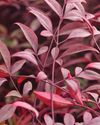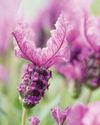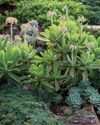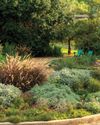
A layer of white ice crystals covering your garden is a worrying sign, especially when it is prolonged. But frost doesn’t only affect the outside appearance of your plants. Ice crystals can also do damage at a cellular level, killing off parts of the plant or potentially the entire plant if not protected.
Ice crystals that form outside of the plant’s cells can cause dehydration and damage to the cell walls. This damage causes cell membranes to rupture, impacting important cellular processes that keep the plant alive. Frost also forms inside the plant’s cells. When ice forms inside the cell, it can expand and burst, leading to cell death. The formation of ice crystals inside the cell also reduces levels of important compounds like amino acids and sugars that are essential to plant survival.
Some plants are obviously more sensitive to frost than others, depending on the conditions in their native environments. Younger plants are also more vulnerable to damage than mature, established plants, especially if the frost persists for long periods.
Although frost may be evident on your plants during temperature dips, the damage caused could only begin to show days later. Leaves and stems may become discoloured and soft, with some changes in shape as a result of the cell damage. Plants will likely stop growing or may drop their leaves if the problem is severe.
This story is from the June 2023 edition of The Gardener.
Start your 7-day Magzter GOLD free trial to access thousands of curated premium stories, and 9,000+ magazines and newspapers.
Already a subscriber ? Sign In
This story is from the June 2023 edition of The Gardener.
Start your 7-day Magzter GOLD free trial to access thousands of curated premium stories, and 9,000+ magazines and newspapers.
Already a subscriber? Sign In

FIRE AND Feathers!
On a dreary winter's day, a screen of fiery and feathery leaves puts up a fight against dullness!

GET THE ladies in!
At this time of year, early-flowering shrubs vie with each other to get the most attention. We say: Trust those with female names for frills and butterflies. They go the extra mile to flower their hearts out.

Vegetable Soups and dumplings
Vegetables make the most delicious soups and classic combinations are always a winner.

Yummy sweet potatoes for your good health
Boiled, baked or braaied, sweet potatoes (Ipomoea batatas) are a delicious and healthy winter comfort food. Just a dollop of butter, a little seasoning and you are good to go.

Pretty and functional
If cooking is your main thing, you would probably be more interested in the culinary value of the three herbs and some of their varieties we are describing.

Dried Seedheads & Pods
Autumn and winter are the best times to see what flowers produce the best seedheads that can be left on the plants to feed the birds and bugs and for harvesting for dried arrangements.

SO MANY FACES and so many choices...
Whoever associated a Cotyledon orbiculata (pig's ear) with the ear of a pig obviously did not know about all the varieties and cultivars this species in the genus Cotyledon has.

COLOURFUL Cold Weather WINNERS!
If it comes to a vote, these dependable shrubs will be the top candidates for prime performance in winter and in other seasons...

What makes a garden sustainable?
It is interesting to note that the United Nations defines sustainable development as: “development that meets the needs of the present without compromising the ability of future generations to meet their own needs”.

Nurturing NATURE-The Story of Kraal Garden's Transformation
Nestled within Prince Albert's rustic embrace lies a gem that is a testament to the transformative power of human vision and nature's bounty.